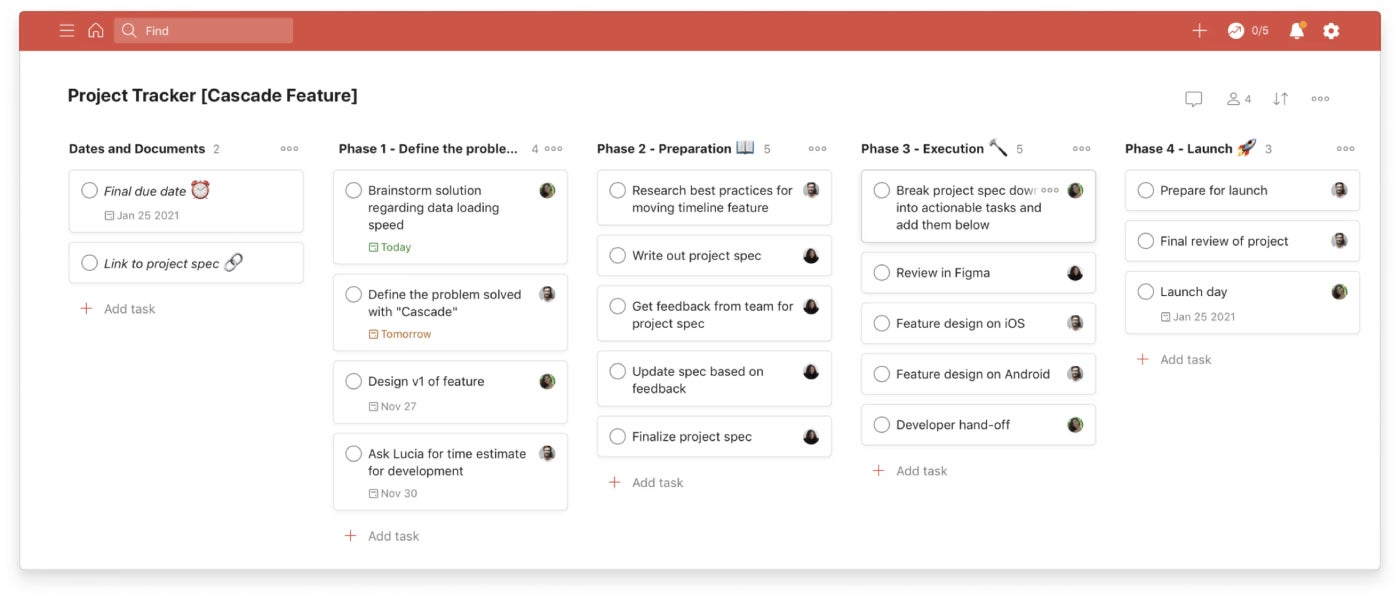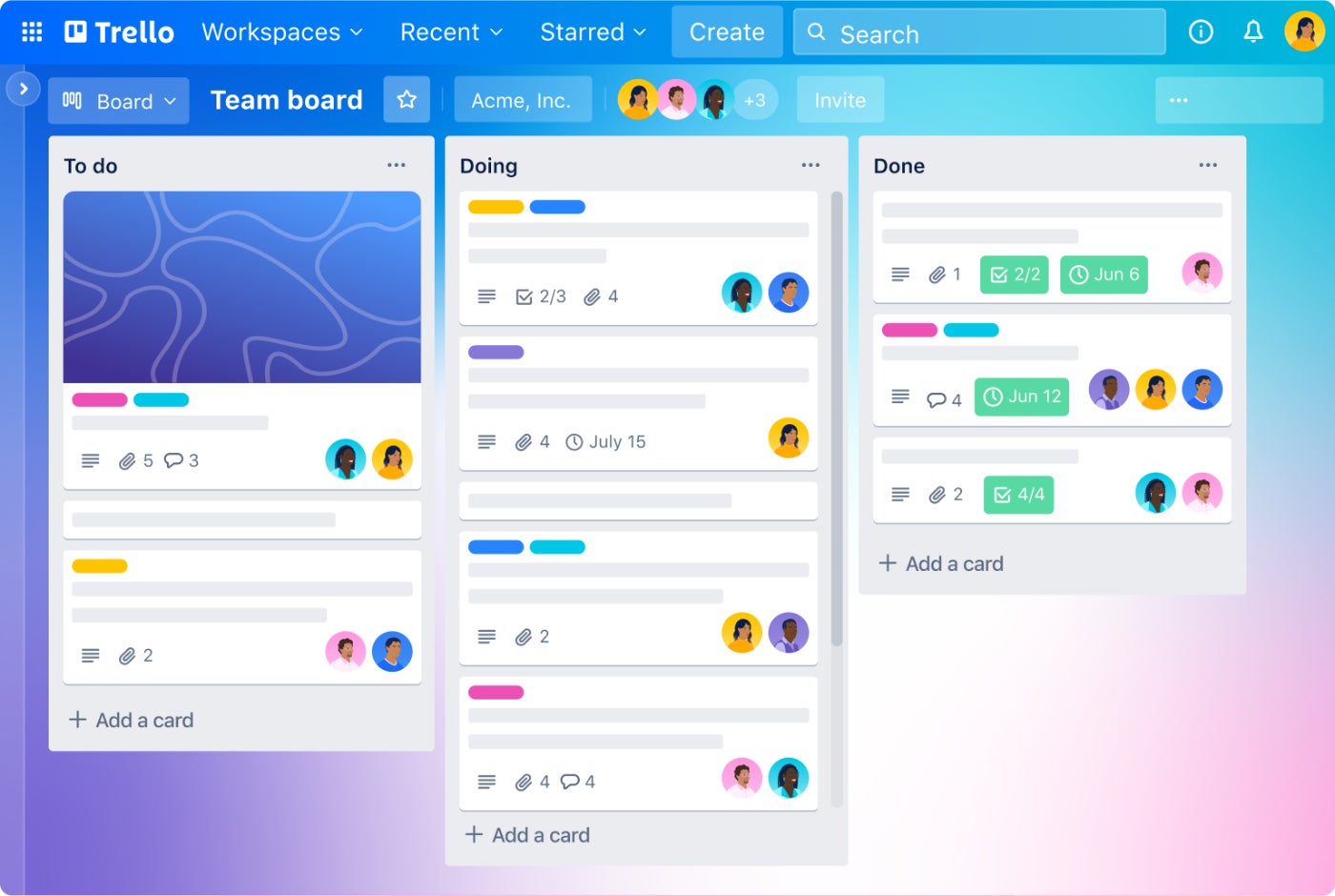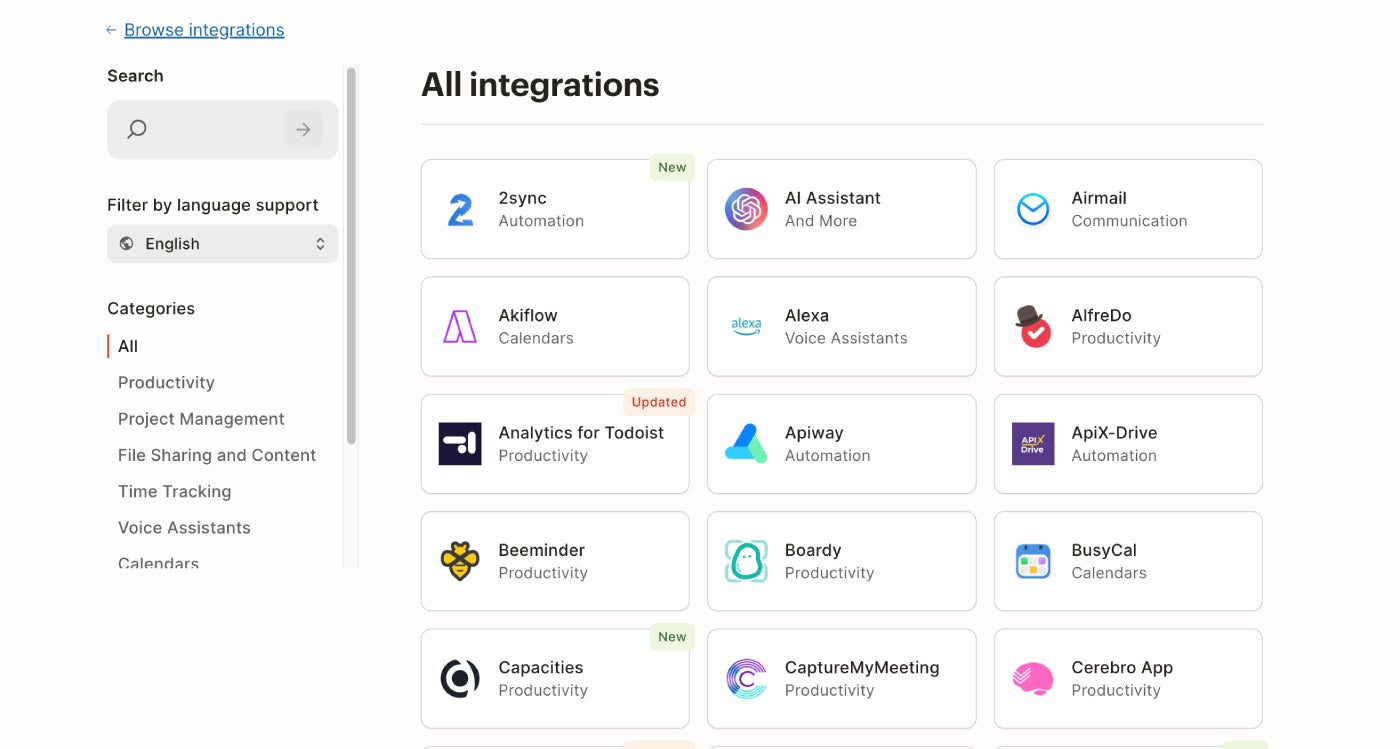
Trello and Todoist are both examples of powerful, detailed and high-quality project management software that can help workers navigate through their days, weeks, months and beyond on the job.
However, it is important to note that Trello recently had a massive data breach that affected millions of personal accounts.
| Features | ||
|---|---|---|
| Starting price (billed annually) | ||
| Starting price (billed monthly) | ||
| Free forever | ||
| File uploads (free plan) | ||
| File uploads (paid plans) | ||
| Integrations | ||
| AI | ||
| Multiple views | ||
| Activity history | ||
| Task management | ||
|
|
Trello is designed more for collaborative, team-based project management, with extensive features for automation and integration through Power-Ups. The free plan is generous in terms of member and board limits but can become restrictive with its limit on automation actions. Upgrading to higher tiers brings more automation capabilities and advanced project views like timelines and dashboards, which are crucial for larger teams needing extensive project tracking and management.
Todoist’s simpler approach focuses on individual productivity and small-team collaboration. The free plan is basic and suitable for personal use or small projects. The Pro plan is affordable and provides ample features for power users needing advanced task management and reminders. The Business plan adds necessary administrative features for team management, making it ideal for small to medium-sized teams.
For more information, read our comprehensive Trello review.
For more information, read our comprehensive Todoist review.
Winner: Trello
Trello uses a kanban board technique where tasks are represented as cards that can be moved between lists to represent different project stages. Cards can contain a wealth of information, including due dates, checklists, attachments and comments. Trello is designed for visual organization, making it easy to see the status of tasks at a glance.
Todoist focuses on list-based task management, where tasks can be sorted into different projects and categorized by label. It also supports subtasks, making it helpful in breaking down complex tasks into smaller, manageable parts.

Winner: Trello
Trello offers extensive collaboration features, including unlimited members on boards (even in the free plan), comments on cards and the ability to assign tasks to specific team members. Higher-tier plans introduce features like observers and multi-board guests, making the tool well-suited for team-based project management.

Todoist allows collaboration by sharing projects and tasks with team members. It includes basic collaboration features such as comments and task assignments but lacks the depth of Trello’s collaborative tools.
Winner: Trello
Trello provides built-in automation through Butler, which allows users to create custom rules and automate repetitive tasks. Trello’s automation capabilities are extensive and can be integrated with various Power-Ups to enhance functionality.
Todoist offers basic automation features through integrations with third-party services like Zapier. While helpful, these automations are not as deeply integrated into the platform as Trello’s Butler.
Winner: Trello
Trello supports a wide range of integrations, known as Power-Ups, which can be added to enhance boards with tools like Google Drive, Slack and others. These integrations allow users to tailor Trello to their specific needs.

Todoist integrates with several vital tools, such as Google Calendar, Gmail and various time-tracking and communication tools. However, the range of integrations is not as extensive as Trello’s.
Winner: Tie
Trello offers robust mobile and desktop applications that provide nearly all the functionalities available on the web version. This ensures users can manage tasks and projects on the go without missing key features.
Todoist also provides excellent mobile and desktop apps, which are praised for their clean design and usability. These apps are well integrated with the leading platform and maintain a consistent user experience across devices.
Winner: Todoist
Trello’s free plan includes up to 10 boards per workspace and 250 automation actions per month. Higher-tier plans unlock unlimited boards, advanced automation and additional views (timeline, calendar). Pricing ranges from $5 to $17.50 per user per month, depending on the plan.
Though the Todoist free plan is more limited, with up to 5 active projects and basic task management features, the Pro plan is more affordable, starting at $4 per user per month, billed yearly. It offers 300 active projects, reminders and productivity tracking. The Business plan costs $6 per user per month when billed annually and adds administrative features and team management tools.
Winner: Todoist
Trello is designed to be highly intuitive, especially for users who prefer a visual approach to task management. The drag-and-drop interface makes it easy to move tasks between stages and track progress visually. Todoist is known for its clean and straightforward interface, which is easy to navigate and use, making it ideal for users who prefer a straightforward, list-based task management system.
SEE: Top 10 Trello Alternatives and Competitors
SEE: 7 Best Todoist Alternatives and Competitors
Trello is the winner for team-based, collaborative project management, focusing on visual organization and automation. Todoist excels in individual productivity and task management, offering a simpler, more affordable approach.
However, do note that Trello had a data breach recently that affected 15 million users, so you may want to steer clear until it shows security improvements.
To write this review, we assessed the official pricing pages and feature lists of both Trello and Todoist to get the most up-to-date information directly from the source. We conducted hands-on testing of both platforms to understand their interfaces, usability and key features firsthand.
This included setting up projects, adding tasks, testing collaboration features and exploring automation capabilities. Finally, we reviewed user feedback from reputable sources to gather insights on user experiences and common pain points.